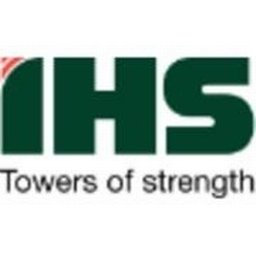Job Opportunities in Nigeria
November 6, 2024
7-Fifteen Capital Limited
Abuja
FULL TIME
SENIOR INVENTORY OFFICER (Construction)
SENIOR INVENTORY OFFICER JOB DESCRIPTION
Education: A degree or diploma in supply chain, commerce, engineering, or related field
Experience: At least 7 years of experience in procurement and/or inventory, with at least 3 years in construction and 3 years in a management role.
Skills: Strong negotiation, communication, and inventory management skills
Leadership: The ability to manage teams, monitor operations, solve conflicts, delegate tasks, share feedback, and motivate team members
Relationship management: The ability to maintain ongoing relationships with customers and fulfill their expectations
Risk management: The ability to identify and mitigate risks or disruptions that may arise
Understanding of supply chain procedures: The ability to keep track of logistics, update the company's inventory, and analyze operational performance
Salary Expectation (Net): NGN 450,000 – 550,000
ROLES:
1. INVENTORY PLANNING AND FORECASTING: Anticipate material needs and adjust plans based on project demands.
2. INVENTORY CONTROL: Maintain accurate records and track stock to avoid discrepancies.
3. MATERIAL RECEIVING AND INSPECTION: Verify quality and quantity of incoming materials.
4. COORDINATION WITH PROJECT AND PROCUREMENT TEAMS: Communicate material needs and stock levels.
5. INVENTORY OPTIMIZATION: Minimize excess stock and reduce storage costs.
6. TRACKING AND REPORTING: Provide regular updates on inventory status and usage.
7. LOSS PREVENTION: Implement security and handling practices to prevent loss and theft.
8. HEALTH AND SAFETY COMPLIANCE: Ensure inventory management aligns with safety standards.
9. RETURN AND DISPOSAL MANAGEMENT: Organize returns and disposals for unused or obsolete items.
RESPONSIBILITIES
Pay: ₦450,000.00 - ₦550,000.00 per month
Application Deadline: 25/11/2024
Education: A degree or diploma in supply chain, commerce, engineering, or related field
Experience: At least 7 years of experience in procurement and/or inventory, with at least 3 years in construction and 3 years in a management role.
Skills: Strong negotiation, communication, and inventory management skills
Leadership: The ability to manage teams, monitor operations, solve conflicts, delegate tasks, share feedback, and motivate team members
Relationship management: The ability to maintain ongoing relationships with customers and fulfill their expectations
Risk management: The ability to identify and mitigate risks or disruptions that may arise
Understanding of supply chain procedures: The ability to keep track of logistics, update the company's inventory, and analyze operational performance
Salary Expectation (Net): NGN 450,000 – 550,000
ROLES:
1. INVENTORY PLANNING AND FORECASTING: Anticipate material needs and adjust plans based on project demands.
2. INVENTORY CONTROL: Maintain accurate records and track stock to avoid discrepancies.
3. MATERIAL RECEIVING AND INSPECTION: Verify quality and quantity of incoming materials.
4. COORDINATION WITH PROJECT AND PROCUREMENT TEAMS: Communicate material needs and stock levels.
5. INVENTORY OPTIMIZATION: Minimize excess stock and reduce storage costs.
6. TRACKING AND REPORTING: Provide regular updates on inventory status and usage.
7. LOSS PREVENTION: Implement security and handling practices to prevent loss and theft.
8. HEALTH AND SAFETY COMPLIANCE: Ensure inventory management aligns with safety standards.
9. RETURN AND DISPOSAL MANAGEMENT: Organize returns and disposals for unused or obsolete items.
RESPONSIBILITIES
- Coordinate with suppliers and procurement to schedule deliveries in alignment with project requirements.
- Inspect materials upon arrival to confirm quality, quantity, and condition, ensuring they meet specifications.
- Document and report any discrepancies or damages to the procurement team for resolution.
- Maintain records of received items, including delivery dates, quantities, and inspection outcomes.
- Communicate regularly with project teams to stay informed of upcoming material needs and schedule changes.
- Update procurement on stock levels and anticipated requirements to trigger reorders or adjustments.
- Coordinate closely with project site personnel to ensure timely material delivery to work areas.
- Notify the procurement team of any anticipated shortages or issues affecting project progress.
- Implement just-in-time (JIT) inventory practices when feasible to reduce excess stock.
- Analyze inventory turnover rates to identify slow-moving items and avoid overstocking.
- Optimize inventory layout to facilitate easy access and minimize handling time.
- Track and report inventory-related costs, helping to identify potential cost-saving opportunities.
- Use inventory management software to track stock levels, item locations, and usage history.
- Generate and share inventory reports with project management and procurement.
- Record and report on inventory discrepancies, stock adjustments, and material usage.
- Provide insights into material usage trends and inventory levels to support project planning.
- Implement security measures to prevent unauthorized access to inventory storage areas.
- Monitor for signs of theft, tampering, or damage, and take corrective actions as needed.
- Conduct investigations into inventory discrepancies and report any significant losses to management.
- Train site personnel on proper handling and storage procedures to minimize loss and damage.
- Establish safety protocols for handling, storing, and disposing of materials, especially hazardous ones.
- Ensure all storage areas are compliant with local safety and environmental standards.
- Keep inventory storage areas organized to reduce risks of injury or accidents.
- Stay updated on regulatory changes that may impact inventory handling and storage requirements.
- Track and organize the return of excess materials or defective items to suppliers.
- Coordinate the disposal or recycling of unusable inventory, following environmental guidelines.
- Document returned or disposed items to maintain accurate inventory records.
- Analyze inventory turnover to determine which items are underused and reduce future orders.
Pay: ₦450,000.00 - ₦550,000.00 per month
Application Deadline: 25/11/2024
Latest Job Opportunities
November 10, 2024
Smart Partners Consulting Limited
Cleaning Technician
Lagos
FULL TIME
View DetailsSimilar Jobs


October 21, 2024
IHS Towers
Senior Specialist, Finance Process Optimization
Lagos
FULL TIME
View DetailsOctober 21, 2024
AIICO Insurance Plc
Senior Officer, Bank Reconciliation
Lagos
FULL TIME
View DetailsOctober 21, 2024
Adeniyi Coker Consultants Limited
SENIOR DIGITAL MANAGER
Lagos
FULL TIME
View Details